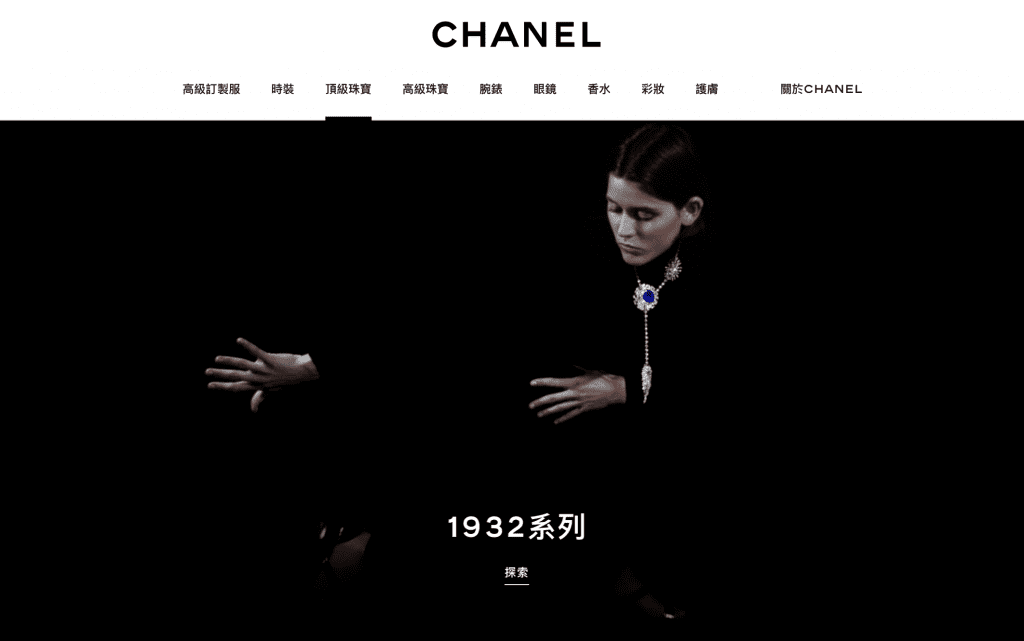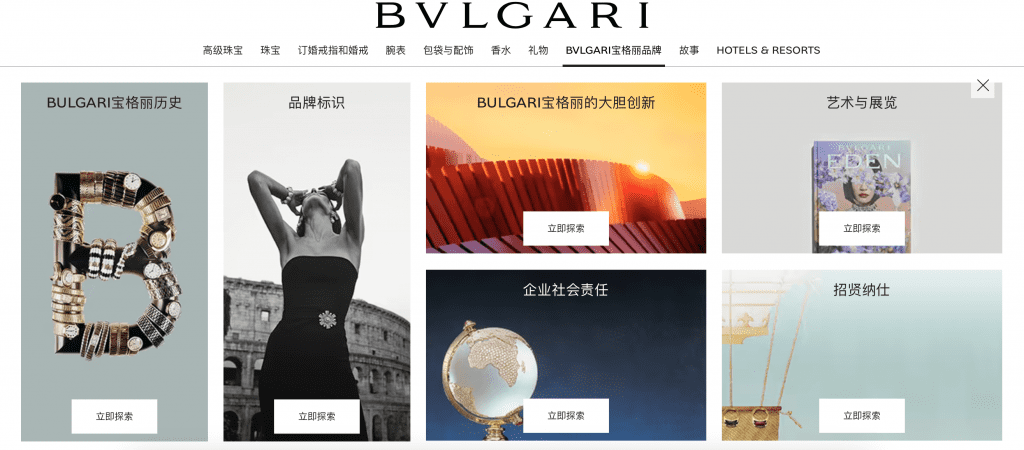Chinese consumers have a well-established affinity for luxury goods. The robustness of luxury goods centric spending was clearly demonstrated in the RMB 471 billion ($73.59 billion) that consumers in China shelled out in 2021, a 36 percent year-over-year increase, according to Bain & Co. To put that growth in perspective even further, luxury goods sales in China more-than-doubled between pre-pandemic 2019 and 2021, rising from the 234 billion yuan that consumers spent on the Chinese mainland in 2019. The growth in luxury goods sales comes despite strict COVID-19 lockdowns and a corresponding “slump in Chinese retail sales overall since the pandemic began in 2020,” CNBC reported last year, noting that the data from Bain – which puts China on track to become the largest luxury goods market in the world by 2025 – also clearly “reflects the growth of China’s domestic market as a destination for international brands.”
The draw of international luxury brands to consumers in China – from a deep-pocketed cohort of “super-spenders” to increasingly powerful Gen-Z shoppers – is particularly well-established in light of the fact that the Chinese luxury market “has yet to develop the widespread sophistication necessary to sustain demand for [homegrown luxury] brands,” McKinsey analysts asserted back in 2019. And while this is expected to change, as evidenced by the rising demand for native sportswear brands, such as Li-Ning and ANTA, for example, and the rising interest among Chinese consumers (particularly those of the Gen-Z demographic) in “Made in China” products, the status quo remains that luxury purchases in China are dominated by goods from Western luxury, whether that be from Hermès, Louis Vuitton, and Chanel bags, Patek Philippe and Rolex watches, or Mercedes and Porsche cars.
Many of these Western luxury behemoths have a strong-hold on the wallets of Chinese consumers and the Asia-Pacific market more generally, thanks in large part to their world-famous reputations for luxury. And while groups like LVMH derive the bulk of their annual revenues from Asia (excluding Japan), success in this market is hardly a sure-fire win for all non-native entities. In fact, brands are likely to be underserved if they do not adapt specifically to the Chinese market – both in terms of the products, themselves, and their marketing of those goods. And beyond that, companies need to be strategic about their branding, which includes the names and other trademarks that they use.

Practically speaking, companies may be able to engage in seamless experiences in markets beyond their home turf by using their English language branding, but this practice is not necessarily applicable across the board, and certainly, does not translate neatly to the increasingly-important Chinese market, as even though figures of English-learners in China can reach up to 300 million, according to some reports, most statistics about English speakers in the country put the number closer to 50 million, which is less than 3 percent of the population. That is a significant statistic for luxury brands looking to effectively market to Chinese consumers.
First-to-File, First-to-Name
With such striking figures at play, brand owners should be reminded of the importance of adopting – and protecting – Chinese language versions of their brand names. “This approach is not only effective from a consumer standpoint,” according to HFG Law & Intellectual Property’s Daniel Escudero, but it will also help companies “to protect and reinforce the strength of their trademarks and broader brand awareness in the market.”
Aside from serving as an essential part of any marketing efforts in China, it is also important for companies to adopt – and consistently use – a Chinese-language name because if they fail to use such branding and secure the corresponding trademark rights, it can result in a host of consequences. Among the common issues for companies that do not swiftly snap-up relevant trademark registrations in China, which awards trademark registrations on a first-to-file basis (subject to bad faith filing provisions that have been included in the China’s amended trademark legislation). This is the phenomenon of registration piracy, which refers to instances where an unaffiliated third-party (or third parties) register a company’s branding often in an attempt to piggyback on the established appeal/reputation of that brand or as part of a scheme to hold on to the trademark registration and extract a settlement from the brand owner, thereby, resulting in lengthy and expensive disputes for the non-native brand owner.
There is also a risk that if brands do not select Chinese names for themselves, consumers will inevitably do it for them, and will use the name(s) they choose when they refer to the company and its products, potentially resulting in names that companies do not approve of. It is not uncommon for “Chinese netizens to collectively assign a Chinese name if a brand becomes popular enough” and lacks a specified Chinese name, says Schwegman Lundberg & Woessner’s Aaron Wininger This can be problematic, he contends, if the consumer-chosen names are not “on-brand” and/or “do not carry the connotation” that the brand aims to embody in the market.
Aside from consumers potentially choosing names of their own, that may be off-brand and that deprive companies of the ability to exert “control over their brand narrative” as a result, companies stand to be damaged if one group of consumers adopts a Chinese language name for a brand, while others make use of a different name for the same brand, which could ultimately cause confusion and “dilute the strength of a brand’s trademark,” according to Escudero.
Picking a Name
These risks and others are driving forces behind why many major Western companies looking to expand into the Chinese market select separate Chinese language names and other branding, which in many cases are not merely a simple translation from their English language monikers, and make their Chinese-language names known early on. Because “Chinese trademarks as a whole are fanciful terms with no specific meaning in the dictionary,” CCPIT Patent & Trademark Law Office’s Hongyan Wang asserts that brands often select their Chinese names by way of “a combination of transliteration, translation, and adaptation, while also factoring in the features of the goods [and services]” that they offer.
With this in mind, Wang states that brands commonly select Chinese names that “correspond closely” with their original trademarks and that have “a clear pronunciation, relevant meaning, and high level of consumer recognition.” The Chinese trademark for cosmetics giant Estèe Lauder, for example, is ‘雅诗兰黛’ (YA SHI LAN DAI); the Chinese trademark of Chanel is ‘香奈儿’ (XIANG NAI ER); and for Lancome, it is ‘兰蔻’ (LAN KOU). “All of the selected Chinese characters relate to beauty, elegance, poetry, flowers, or perfume,” he contends, noting that all of the marks “are similar to the [brand’s English language] trademarks in pronunciation; and all are easy to read.”

Still yet, Wininger says that Hermès uses 爱马仕 (Àimǎshì) – a term that “roughly translates as ‘loves horses,’” a nod to its roots as an equestrian brand – on its Chinese website in conjunction with Hermès name. In most cases, brands will use their English language names on their brand.cn websites and in ad campaigns along with their Chinese language branding, which appears to be a reflection of how famous Western brands are working to strike a balance between showcasing their well-known names (which are, in fact, known to consumers across the globe), while also specifically catering to Chinese luxury consumers. Meanwhile, LVMH-owned brand Bulgari opted for a Chinese language name that approximates its English pronunciation, 宝格丽 (Bǎo gé lì), as did Armani, which uses the “阿玛尼” (“A MA NI”) name in China, Nike 耐克[nai ke], adidas 阿迪达斯 [a di da si], and GUCCI, which has registered at least three Chinese marks with similar pronunciations, 古驰[gu chi], 古慈 [gu ci], and 古奇 [gu qi].
All in all, Wang encourages companies that are entering the Chinese market for the first time or that have already done so but have not established specific Chinese names and branding to “consider the features of Chinese characters and Chinese market, properly translate their brand into Chinese, and timely apply for registration of both their English and Chinese trademarks.” Doing so, he says, “can ensure the protection of your brand and lay a solid foundation for the marketing, promotion and success of your brand in China.”
At the same time, it is worth noting that the stakes may be even higher when it comes to adopting the appropriate branding, as Western luxury giants continue to maintain sizable price differentials between Europe and China, which results in Chinese consumers paying as much as 50 percent more for products on the mainland than if they were to buy those goods in the brands’ stores in Europe, and as Beijing and Chinese netizens continue to take stands in instances in which they feel as though they have been wronged. (Dolce & Gabbana’s ad campaign snafu comes to mind, as does human rights-related backlash against the likes of H&M and Nike, and the many examples of Chinese authorities taking issue with brands and retailers’ labeling of places like Taiwan as distinct from China.) Taken together, these elements should likely prove to be additional impetus for brands to consider how they operate in China, including from a branding point of view.











